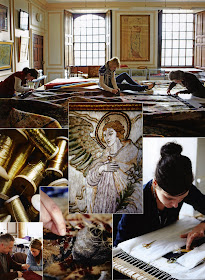Designate create fabulously rustic handmade interior accessories using reclaimed materials including wood, slate & fabrics.
The husband & wife, Andy and Kirsty Field, have been trading since 2000 and produce a large range including small clocks, wall clocks, mirrors, blackboards, frames, and lamps. Designate’s style is distinctly rustic, which comes from the materials they use, making every item unique. Each item, although made in the same style, will have its own individual character whether it be in the grain, colour, paint effect or size.
Designate aims to produce good quality, unique items at an affordable price ensuring both our distributors, and their customers, have a product to be proud of.
Designate products can be found in their showroom in Matlock (Derbyshire, UK) or at some of their stockists (Iapetus, Malvern, Worcestershire)




























